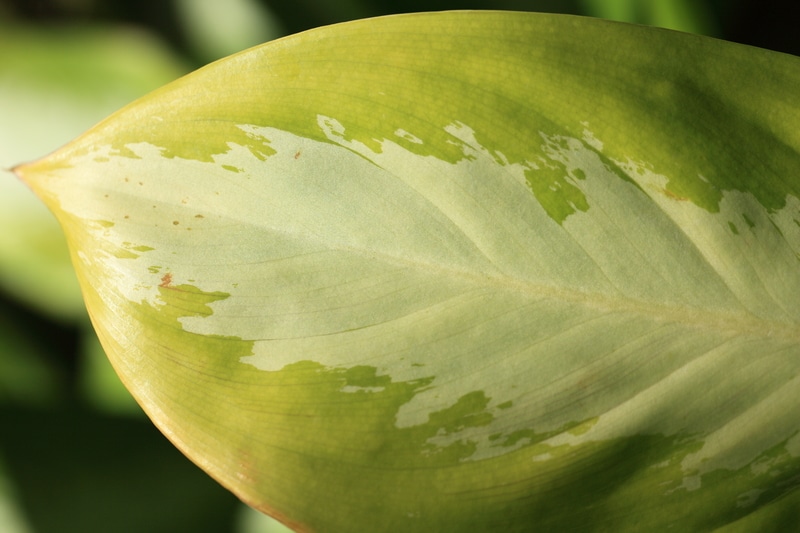Those who want to learn how to propagate Chinese evergreen, you have two methods to choose from. This plant doesn’t only make an eye-catching houseplant, but starting it from cuttings or divisions is also easy to do. However, remember that they are best when you grow them indoors, so consider starting them in the greenhouse to encourage establishment quicker.
Starting and growing plants in the greenhouse are advantageous to any plant species because you can control indoor conditions. Remember that regardless of the propagation technique you choose, this is a vulnerable growth phase, and plants will struggle easily in extreme and fluctuating conditions. This article will discuss how you can successfully propagate Chinese evergreen and care for the plants afterward.

Comprehensive Guide On How To Propagate Chinese Evergreen
Cuttings
Step #1. Cutting selection and preparation
You can grow Chinese evergreen from stem cuttings, and the method is no different than you would with other plants. Select a healthy parent plant and take a 5-inch section below a leaf node. It should be free of any diseases and damages, and make sure you’re using a sharp and sterile tool.
Remember that the parent plant should be healthy to prevent it from getting stressed after cutting. More so, experienced gardeners recommend propagating itself during the middle of the summer to encourage quicker establishment. However, be mindful of the extreme temperatures to avoid stressing the plants.
Step #2. Rooting and maintenance
Once you have the cuttings, prepare them for rooting by removing the leaves at their bottom part. You can expect the development of roots in three weeks, but you can also dip the cuttings in rooting hormone to hasten this process. Then, stick the cutting in moist potting soil or a jar of clean water as your medium.
You want to maintain a humid environment for the cuttings, and you can do this by covering the containers with clear plastic. If you’re rooting in the soil, you always want to check the moisture, which is crucial for rooting. Once you’ve noticed roots, you can remove the cover.
Division
The second method of propagating Chinese evergreen is by division. Perhaps you must choose this method if you have older plants and you need to prevent overcrowding. Remember that Chinese evergreen will need repotting once the roots fill the container.
Step #1. Removal and repotting
The process of dividing Chinese evergreen is straightforward. Gently take the plant out of the container and be careful not to damage the root ball. You’ll then separate it into sections by hand and replant in new containers with the same type of soil medium where they’re from.
Step #2. Maintenance
Dividing and transplanting Chinse evergreen is ideal in spring or summer to help them establish better. You don’t need to create multiple sections since it’s common to only end up with two plants from one mature plant. Upon repotting, you want to provide soil moisture as well to help the plants recover.
Caring For Chinese Evergreen
Location
One of the reasons why gardeners love Chinese evergreens is how they can tolerate low light conditions. This plant’s ideal location is somewhere with moderate light, and direct sunlight can damage the evergreens. You can add low ambient light if you’re growing in the greenhouse, but you can also place the plants somewhere with shade if you are growing outdoors.
The temperature best for Chinese evergreen is around 77°F, but they should also be fine somewhere cool. Still, aim to provide a humid environment and be mindful of your plants’ location since dryness can affect their health and growth. With this in mind, a medium that retains moisture and drains well would be excellent for Chinese evergreen.
You can create a mix using potting soil, sand, and perlite and choose a pot with one drainage hole. Place the container on a tray to prevent waterlogging that can cause root rot. And if you are growing the plants in the house, be mindful of fans that can dry them.
Watering
Chinese evergreens can store moisture, but they will still benefit from watering. Remember that they thrive in moist soil and humid environment. However, never overwater the plants and leave them in standing water because this can lead to pests and root rot.
Allow the medium to dry completely before watering and let the water drain when you do. You also have to remember the climate and conditions in the location to adjust this practice accordingly. Nonetheless, don’t panic if you forgot to water your Chinese evergreens.
Feeding
Because Chinese evergreens are slow-growing, you want to boost them with fertilizer. You can feed them with a water-soluble fertilizer twice a year as part of maintenance every spring or summer. A general-purpose houseplant feed should suffice.
Pruning
Do Chinese evergreens require pruning? This practice is not necessary, but trimming the plants is safe. By cutting the leaves back, you can manipulate the direction of the growth of the plants.
This will create a more horizontal and bushy appearance instead of an upward and tree-like shape on the Chinese evergreen.
Conclusion
When you think of houseplants, perhaps the Chinese evergreen comes to mind. And the good news is you can quickly learn how to propagate Chinese evergreen using cuttings and division without many drawbacks. You can propagate in the summer and use a greenhouse to create a shade and moist environment.
Afterward, maintain the plants by ensuring soil moisture and feed them occasionally to encourage growth. You can also prune the plants to create a bushier appearance.
